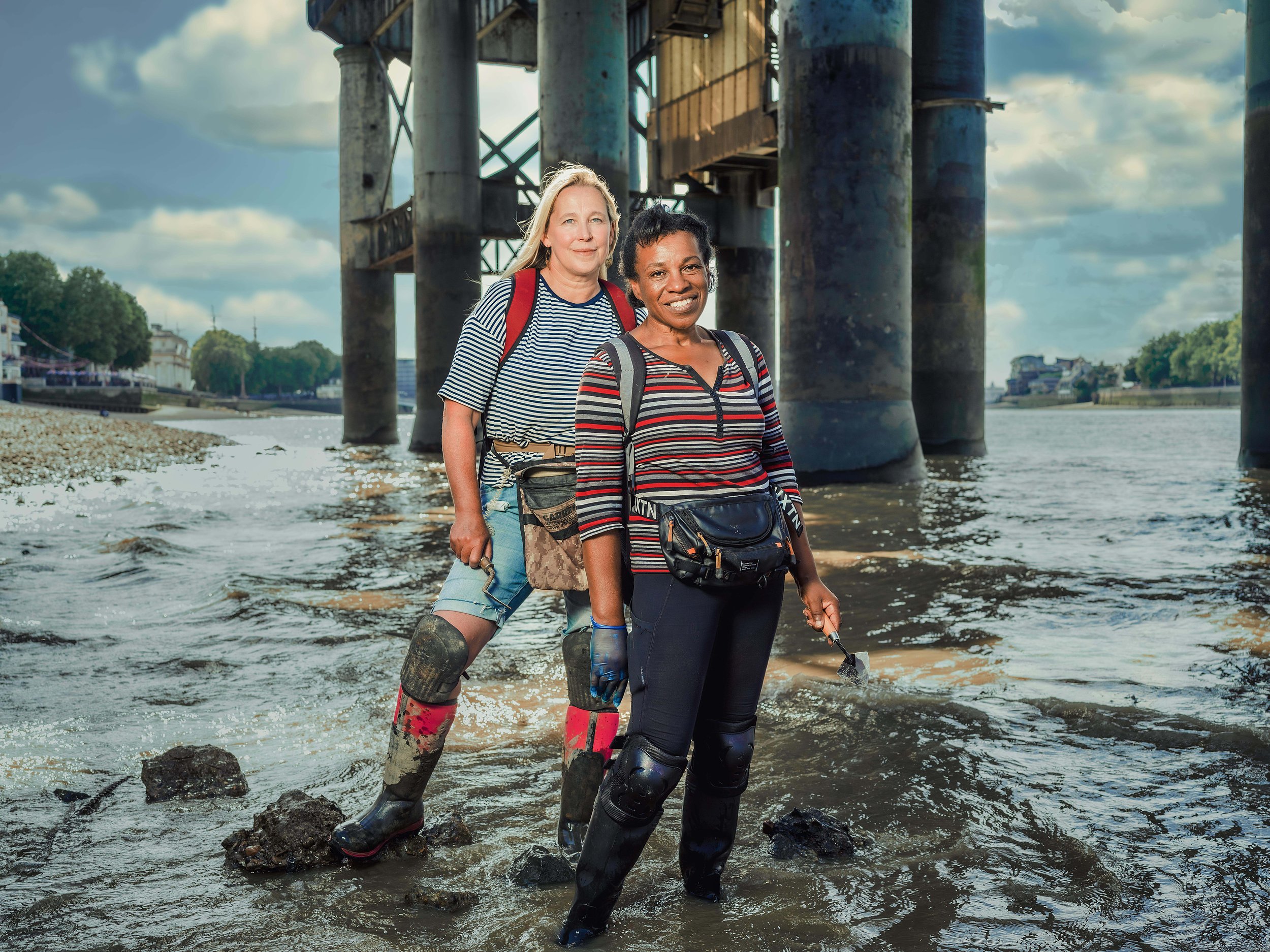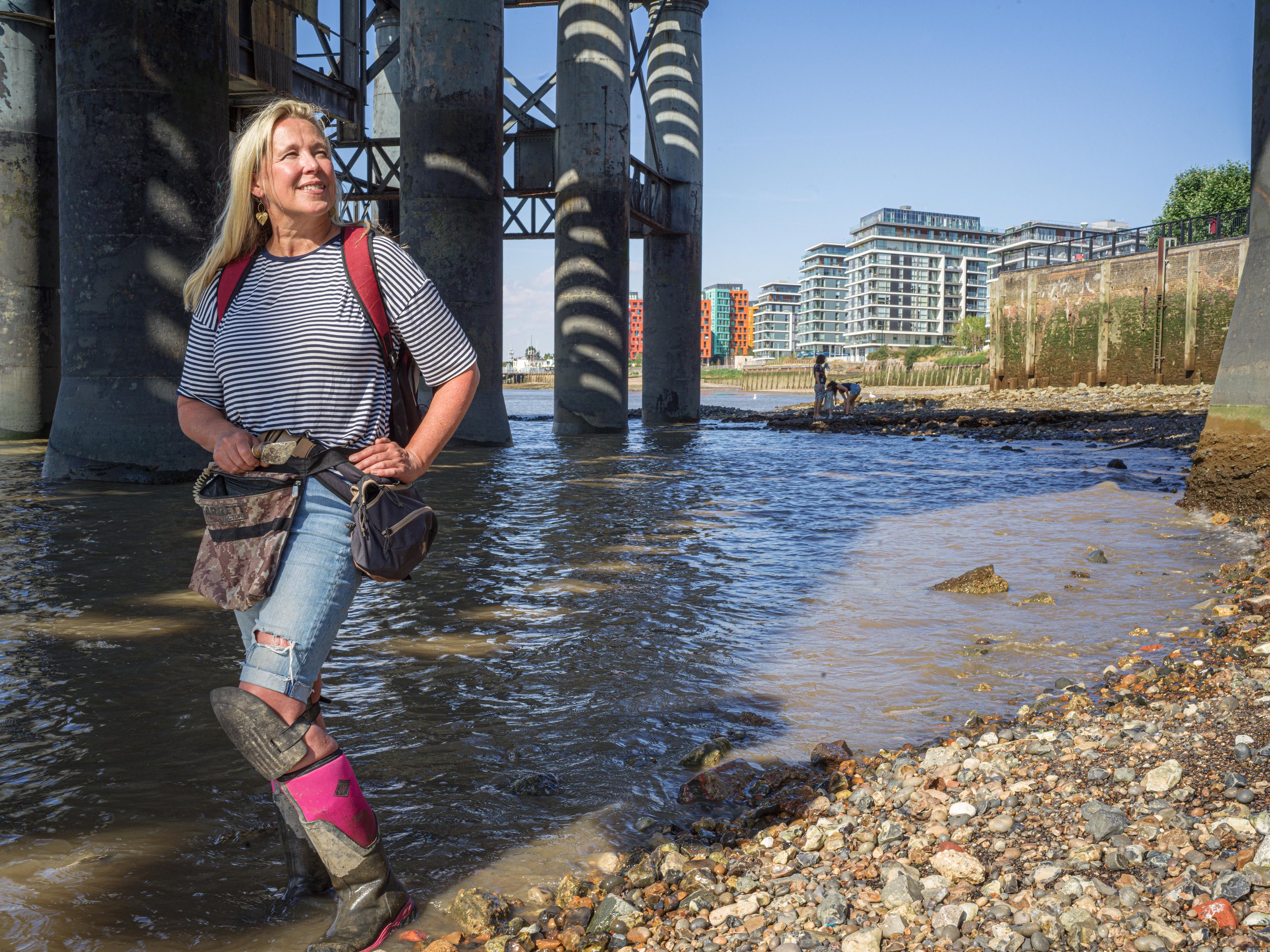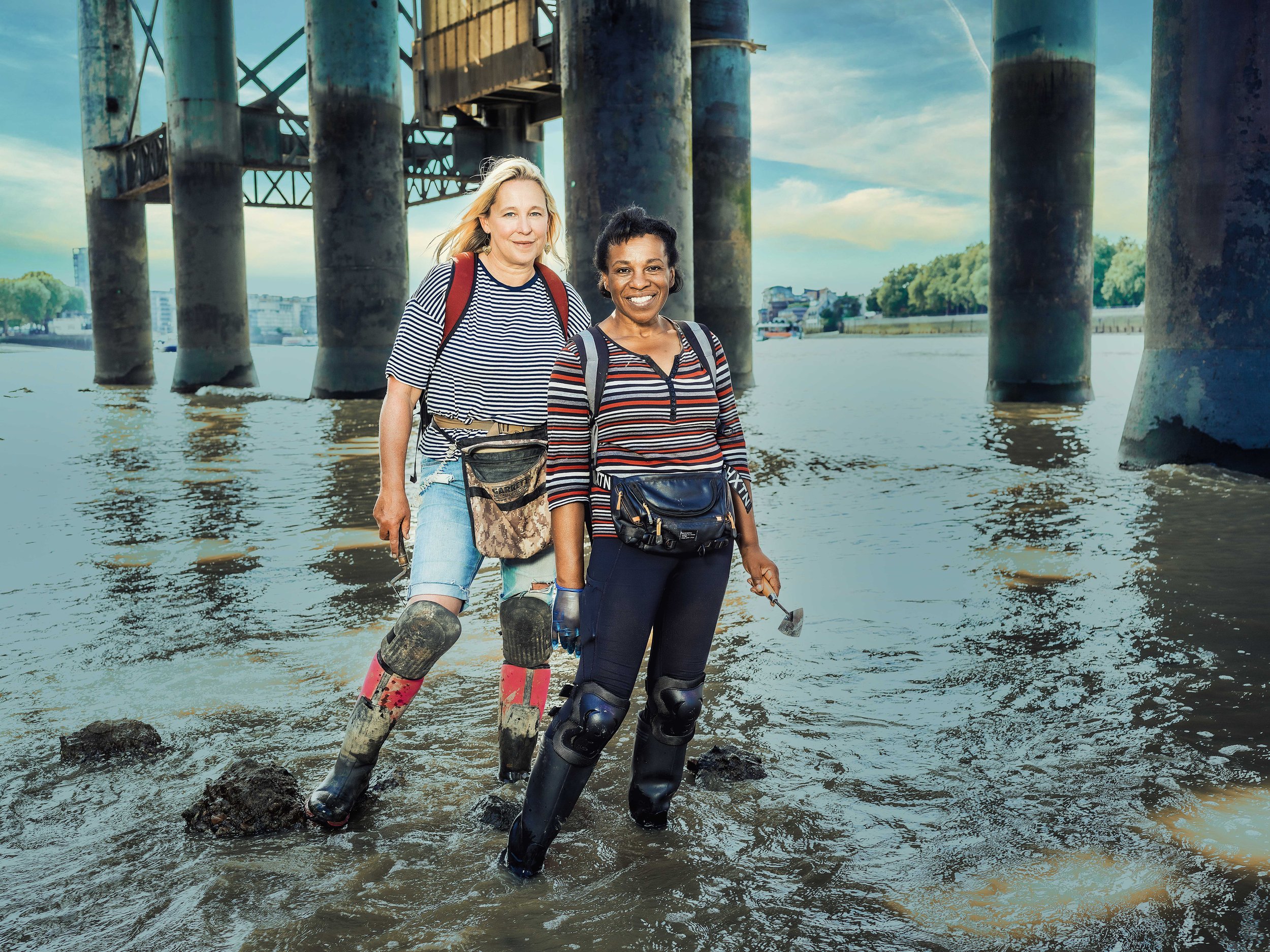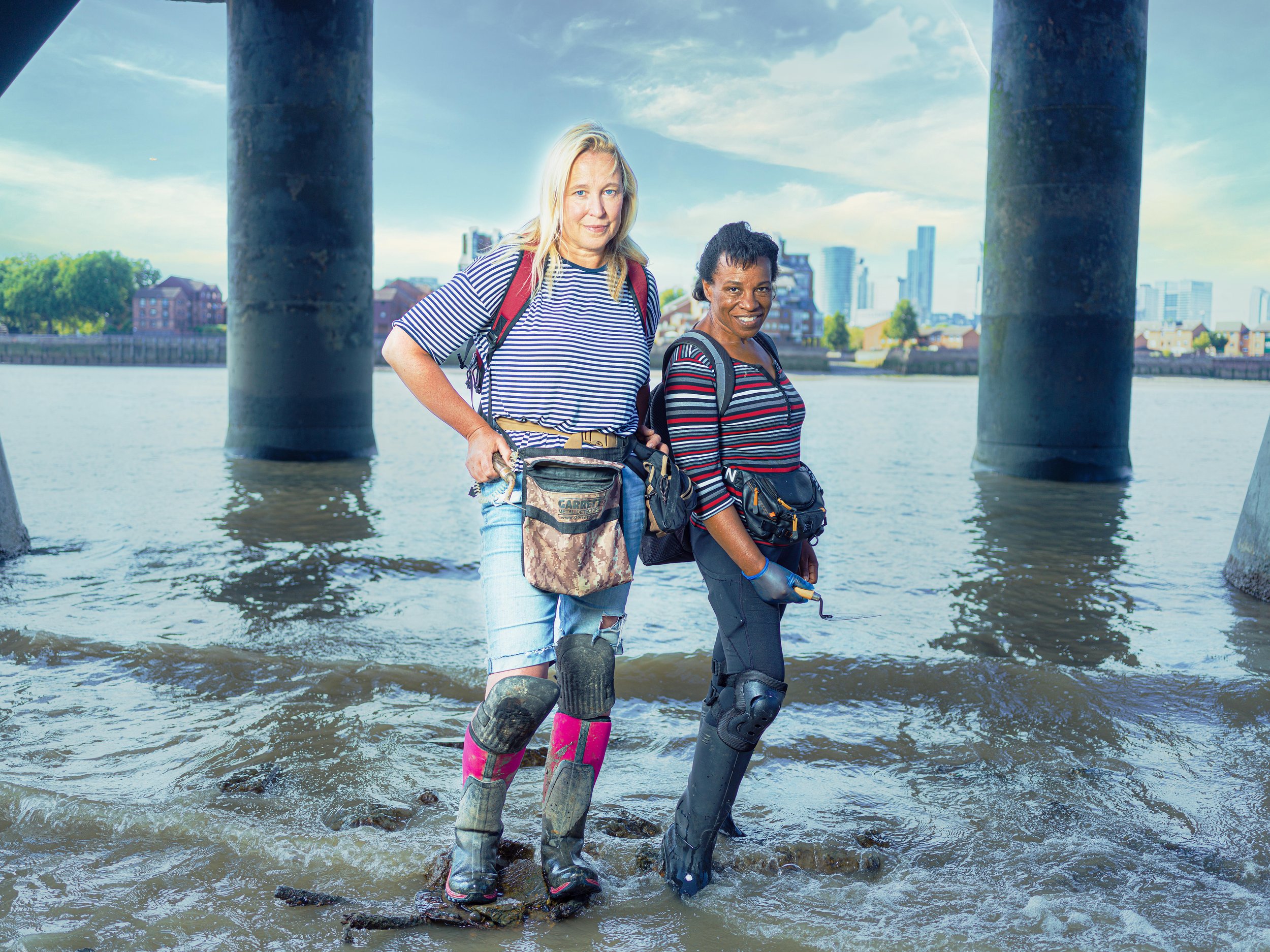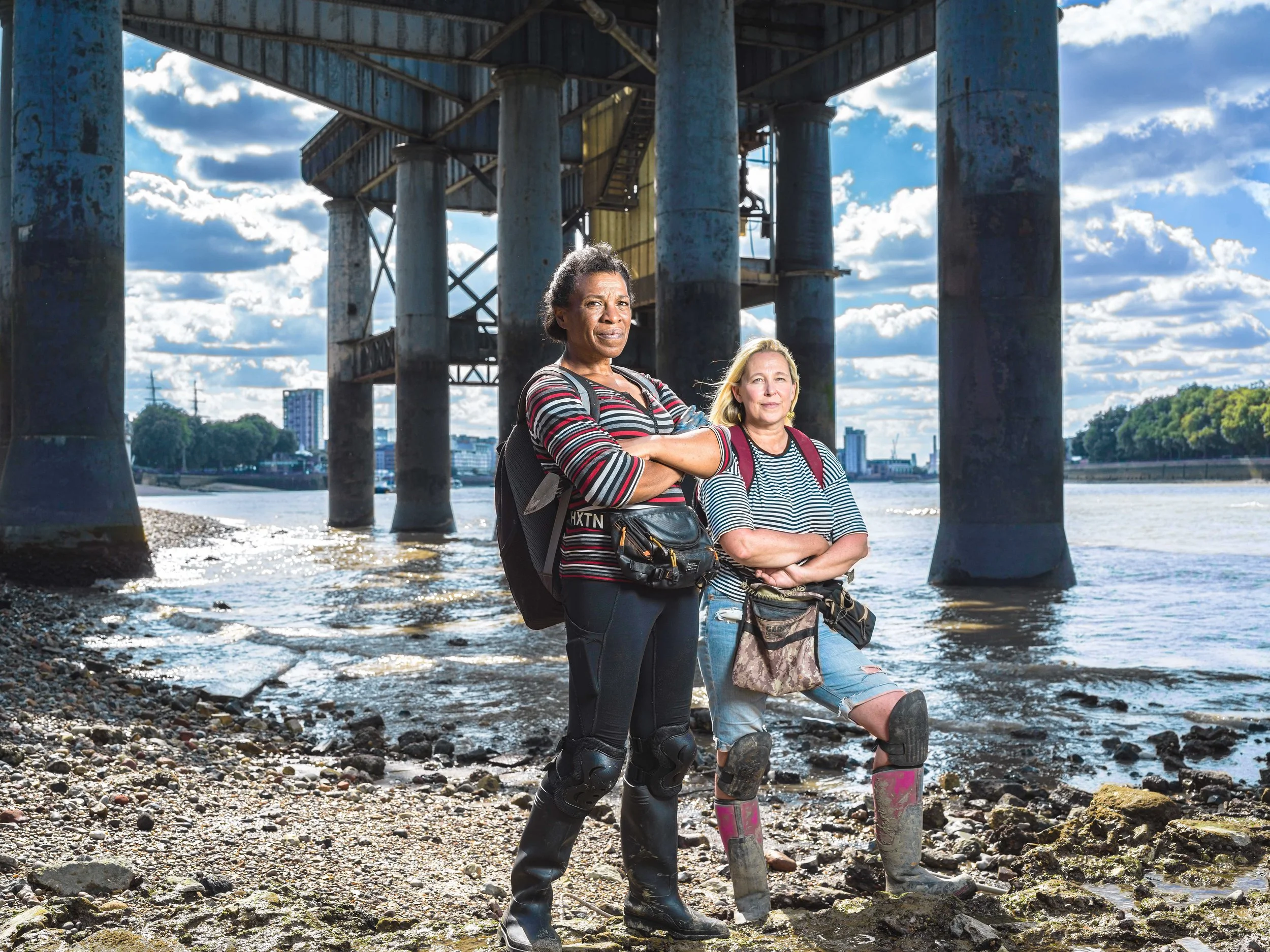The Mudlarks - How much do you about Mudlarking?
The 19th century MP John Burns described the River Thames as liquid history, a vast giant liquid storybook, with each item found revealing new characters, chapters, twists and turns and mysteries. And for Nicola White and her fellow Mudlark, Fran Sibthropne, it's an entirely joyous and enthralling hobby. Mudlarks are the proud keepers of obscure and miscellaneous information derived directly from the research into their finds.
So what's it all about then? Mudlarking?! This pastime is becoming ever more popular across the globe. "I'm sure the original mudlarks would look with some disbelief and disdain at the throngs of people who head down to the foreshore of the River Thames. Small groups and individuals venturing down into the mud at low tide to wade around in search for lost and discarded objects", says Nicola.
Nicola White & Fran Sibthorpe photographed on the River Thames at Greenwich
Nicola comes dressed in her Black and Pink Wellington boots, Knee pads, and trendy knee-length ripped jeans topped off with a Stripy blue & white top. She finishes her look with a camouflage 'finders bag' and her favourite Trowel, which is attached to an elasticated string and fastened to her belt. "I've lost so many great trowels over the years; you just have to put it down for a second, turn around and bang... It's gone forever; that's why I always attach it to my waist these days".
The original mudlarks from pre-Victorian times were forced to do it with no footwear and wearing insufficient layers of clothing. It was an activity borne out of a need to feed the family and desperation to find anything in the stinking Thames mud to sell for a pittance.
Nicola says, "But now here we are, centuries later excitedly consulting tide tables weeks in advance then making our way down onto the foreshore in all weathers with the excited anticipation of a child embarking on a treasure hunt!"
So why do they love it so much, and how has it become so popular?
The reach of social media has made mudlarking accessible and famous worldwide, even if it means doing it virtually by watching the growing number of YouTube channels dedicated to it. There are also hundreds of Instagram accounts on which London Mudlarks proudly put their varied Thames-found treasures on display for all to delight. Ironically, even the most hardened social media addict will put their phones on silent whilst they are completely absorbed in a search for the fragments of the past left out by the Thames tide.
Are these mudlarks on a quest for gold and silver or financial gain? For the authentic Mudlark, it is never about the monetary value of a find. Instead, it's about the magical moment when you hold a found item in your hand last held by someone centuries ago. A clay tobacco pipe a sailor smoked in the 1700s, a bone hairpin worn by a Roman housewife, a dress hook worn by a Tudor theatregoer. These objects take our imagination on a journey and connect us somehow to our lost past.
Fran and Nicola met at an established registered mudlark venue, the Barge House (adjacent to the OXO Tower Wharf, London). It was at the opening of the 'Foragers of the Foreshore' exhibition of the Totally Thames Festival in September 2019.
Recently, Fran Sibthorpe told Nicola about one of her most prized Thames 'find', a small bead used to trade in commodities centuries ago, including during the slave trade. It's a beautiful object yet with a sinister past. It brings up several emotions for her, and It's clear how moved Fran is as she ponders the possibility that her distant family could have once been traded with such a bead.
The find is an 18/19th-century chevron glass patterned small ball.
"I had a great sense of immediate feeling and questioning about the bead", she tells me, "its detailed, layered design, its origin, its journey and how it came to be on the foreshore". The solitude moment of holding the bead in my hand – thinking of my ancestors and wondering if it was ever used for this evil trade will remain an unanswered question. However, it will always be a remarkable, memorable event for me".
The Thames finds have a way of bringing a mixture of emotions to the surface. Love tokens tossed in the River by spurned lovers, engraved rings consigned to the deep, military cap badges from deceased soldiers, lead toys played with by children long gone. We wonder and marvel at their history. So is it any wonder we yearn to return to the foreshore to discover more fragments of London's past?
Fran's connection with Mudlarking came about through a chance meeting and introduction to the pastime. She tells me, 'Mudlarking personally evokes a sense of adventure in me, discovery and the motto, "Expect the unexpected", is always on my mind when searching the waterfronts'. She says, 'I've had this sense from an early age – I'm a down-to-earth person!' The simple task of filtering through the mud on the various sites on the River Thames has become an integral part of who she is as a person. The excitement and anticipation of finding something of fundamental importance and historical value is something that she will continue to do for many years. Mudlarking has given her a unique opportunity to explore, research her finds and gain further historical knowledge to share and receive. "I'm particularly interested in finding the tiny discoveries from 2mm, as these are so easily overlooked. Some of my finds have been formally identified and registered by the Finds Liaison Officer (FLO) at The Museum of London's database for global access".
Living in Ipswich, Fran makes the journey down to the capital whenever she finds the time.
Anyone wishing to try mud larking must obtain a Port of London Authority permit.https://www.pla.co.uk/Environment/Thames-foreshore-permits
You must also register your finds with the Finds Liaison Officer at the Museum of London.
(There are mud larking exhibitions each weekend of September 2022. Details can be found on the Thames Festival Trust website https://thamesfestivaltrust.org/whats-on/). Fran Sibthorpe and Nicola White will be at the Maritime Museum in Greenwich on Sunday 11th September, along with many other mudlarks.
YouTube about Fran's slave bead find is here:-

